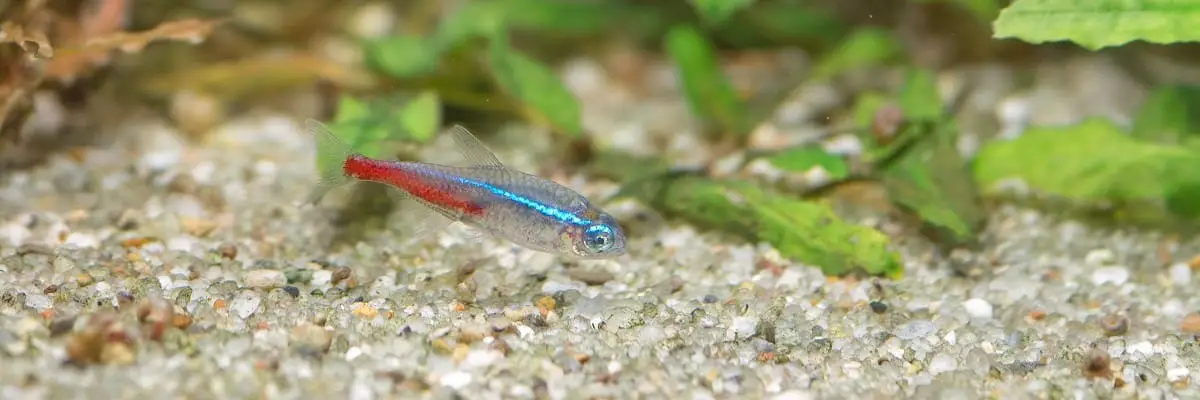You have gone to admire your Neon Tetra and maybe give them a little to eat. But when you look, they are on their side and float or move near the top of the tank. What is going on? What’s wrong with my Tera?
The most likely explanation is that your Tera is having a bout of Swim Bladder Disorder. Learn how Peas and Epsom salts can help.
So whats a Swim Bladder and What is the Disorder?
Your Tetra’s swim bladder is an organ that helps it to regulate its buoyancy. The swim bladder is doing all the work rather than continuously moving to keep in position.
This helps your Tetra to conserve energy and makes it easier to swim. It’s situated behind the other organs, so it can impact your Tetra if any of those organs expand.
Swim bladder disorder is not really a disease. It’s a phrase used to refer to any condition, whether it’s an illness, trauma, or circumstance, that causes your Terra swim bladder to cease functioning properly.
When you’re managing swim bladder disorder, you’re simply trying to relieve the effects of something else that has caused the issue.

So what can cause Swim Bladder in your Neon Tetra?
| Shock: Shock is a less frequent source of swim bladder disorder, but it does happen. When something dramatic occurs in your tank, anxiety, and shock may have an impact. The shock may be triggered by a wide variety of causes—for example, a sudden rise in temperature or a persistent change in the room’s brightness. |
| Overfeeding your Terra’s: The majority of cases of swim bladder disorder are caused by overfeeding your Terra. This also causes them to become constipated, impacting their swim bladder. Not only will this lead them to become constipated, but it could also enable fat cells to develop in their bladder. |
| Bacterial Infection: Swim bladder disorder may also be associated with bacterial infections. This, alongside parasites, is likely to be due to water contamination. If your Terra has an infection, then swim bladder disorder is probably a sign and several other symptoms. Even so, if the bacterial infection becomes so severe that the swim bladder is compromised, euthanasia will have to become a possibility. |
| Water Temperature: If the tank is less than 78 ° F, this might be why your Terra has swim bladder disorder. When the water temperature in the tank falls below the optimal temperature, your Terra’s digestive system can slow right down. If their digestive system starts to slow down, your Terra is more prone to becoming constipated. |
| Parasites: If you’ve not shocked your Terra, or if you’re pretty sure that they haven’t been overfed, then they might be exposed to parasites. Intestinal parasites can infest the stomach you, Terra. This can make it a lot more difficult for your Terra to swim. Although intestinal parasites are not typically lethal, they might occur in severe cases and lead to swim bladder disorder. |
Symptoms Of Swim Bladder Disorder In Terra’s
You can begin to see several different signs in your Terra with swim bladder disorder. Even so, not all signs can be apparent at the same time.
| Lopsided swimming | Trouble swimming and buoyancy problems |
| Struggling to maintain a normal position | A distended belly or curved back |
| Affected appetite | Lethargy |
As well as symptoms indicated above, if your Terra has a parasite or bacterial infection, you can notice the following signs:
| Clamped fins | Shaking |
Treating Swim Bladder Disorder Naturally
The method of treatment you will need for your Terra varies depending on what has caused the swim bladder disorder. Here are four natural remedies you can try at home:
Epsom Salt For Swim Bladder Disorder
If you have any Epsom salt, it can be an efficient way to treat swim bladder disorder in your Terra if it is constipated. The Epsom salt bath is going to give the best outcomes, so here’s how to do it:
| Mix 1 tsp of Epsom salt with half a gallon of water in a sterile bowl. |
| When the Epsom Salt has fully dissolved, introduce half a gallon of your aquarium water to the bowl. |
| Make sure to replace the water that you removed from your aquarium with water that would match the temperature of your tank. |
| Leave your Terra in the Epsom salts bath for 10-15 minutes. If this didn’t clear up their constipation at the point, put them back in their tank. |
| Keep track of your Terra to see if it’s excreted or if it’s moving stronger. |
If you find that your Terra has stopped swimming in the Epsom salts, or if it’s only lying in one place, then immediately add it back to your tank.

Feed Your Nova Terra Peas
Many people claim that green peas help to drive trapped air and food from the intestinal system.
The fact still remains that your fish would not be able to release waste after eating with little fiber. This build-up of waste can cause significant damage.
With too little fiber to support bowel movement, the waste your Terra is continually producing can get trapped and put pressure on the swim bladder.
This pressure prevents the swim bladder from inflating and deflating how it should.
Fresh peas are really high in fiber, making them especially useful in treating constipation in your Terra.
Although fresh peas can fix some floating problems, feeding your Terra peas will not cure hereditary swim bladder disorder or seriously damaged swim bladder.
1. Soften The Peas for Your Terra
You can soften peas one of three ways:
| Rinse your peas off: For frozen peas, this method is appropriate. To thaw frozen peas, rinse them in warm water for 15 to 30 seconds. If you do this, they will be soft enough for Terra. It is best to let the peas thaw on a plate or napkin. |
| Place peas into the microwave: This method can easily soften peas instantly. Fill a microwave-safe container with water and place it in the microwave. After placing the peas into the container, heat them in the microwave for 30 – 60 seconds on high. After the peas are cooled, take out the container and put them on a plate. |
| Boil peas on the stovetop: It will take time, but this is the most effective method. Pour some water into a pot and let it boil. Reduce the heat, then place the peas in the pot. After a minute of boiling, pour the peas into a strainer to cool. |
2. Remove the Skin
The thin skin from around green peas might choke your Nova Terra. Peel the outer, by either method:
| Squeezing the skin of The edge of the skin can be pinched, and the pressure applied to the pea will ease it effortlessly out. The outside of the peas must be firm, or they will turn into mushed peas (great for pies). Each pea must go through this procedure, and then the pea skins must be thrown out. |
| Tearing off the skin: Make an opening in the skin with your fingertips. This opening can be used to peel the excess skin from the pea. Do this for any pea you’re going to feed your Terra. |
3. Cut Peas in Half
| Typically, once you remove the excess skin from the peas, each pea may already be split into two parts. If no, cut along that same line so that each pea is divided into two halves. Now you can feed your Nova Terra. |
| Now you’re able to feed your Terra. Open the cover of the aquarium and scatter with a few pieces at a time. You should only feed 1 – 2 peas per adult Nova Terra and one pea for younger fish. |

